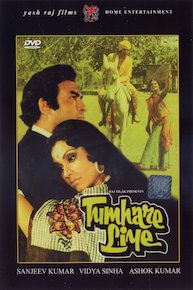
G. Rossini La Cenerentola Opera
Where to Watch G. Rossini La Cenerentola Opera

Gioachino Rossini's "La Cenerentola," a masterpiece of the bel canto opera repertoire, is an inspired retelling of the classic Cinderella fairy tale. While there is not a specific movie titled "G. Rossini La Cenerentola Opera," there have been numerous filmed performances and adaptations of this beloved opera. Assuming you are referring to a filmed recording or adaptation of Rossini's work, here's a general description that captures the essence of this operatic gem.
Gioachino Rossini's "La Cenerentola" is an enchanting operatic work exploring themes of kindness, transformation, and the triumph of virtue over vanity. It is performed by world-class opera companies around the globe and has been captured on film in numerous productions that showcase its vibrant music, intricate libretto, and heartwarming story.
First premiered in 1817 at Rome's Teatro Valle, Rossini's opera diverges from the traditional Charles Perrault's fairy tale in several ways, particularly in its replacing of magical elements with more realistic motifs of enlightenment and personal growth. The story unfolds in two acts, following the journey of Angelina—known colloquially as Cenerentola—who endures the mistreatment of her stepfamily but remains hopeful and compassionate.
In "La Cenerentola," the audience is introduced to Angelina, a kind-hearted young woman forced to serve as the maid in her own home by her vain and uncaring stepfather Don Magnifico and her two self-absorbed stepsisters, Clorinda and Thisbe. Her life takes an unexpected turn when Prince Ramiro, disguised as his own valet in an effort to find a wife who loves him for himself and not his title, meets Angelina and is immediately smitten by her genuineness.
Unlike the classic fairy tale, there is no fairy godmother. Instead, a wise philosopher named Alidoro, acting as Ramiro's tutor, guides the protagonists towards their destiny, subtly filling the role of magical aide. He recognizes Angelina's intrinsic worth and arranges for her to attend the Prince's ball, setting in motion the events that will lead to the exposure of true character and the eventual rewarding of the virtuous.
The opera's music is a splendid showcasing of Rossini's compositional genius, full of vivacious energy, melodic ingenuity, and technical demands that place "La Cenerentola" among the most challenging and satisfying roles for mezzo-sopranos and coloratura altos. The famous mezzo-soprano role of Angelina demands vocal agility and emotional range, as she navigates through soulful arias, like the poignant "Una volta c'era un re," and dazzling coloratura passages evident in her final rondo "Nacqui all'affanno."
Prince Ramiro's tenor role is equally demanding, requiring both lyrical and virtuosic capabilities, which are put on full display in arias such as "Si, ritrovarla io giuro," where he vows to find the mysterious woman who has captured his heart. Don Magnifico, the buffoonish and deluded stepfather, is a bass role that combines humor with vocal prowess, while the baritone role of Dandini, the valet who pretends to be the Prince, provides comic relief and biting social commentary.
What sets "La Cenerentola" apart from other renditions of the Cinderella story is the opera's focus on personal merit and the transformative power of compassion over supernatural intervention. Angelina's purity of heart is contrasted with the superficiality and comedic arrogance of her stepsisters and Don Magnifico, whose hopes of elevating their status are portrayed with wit and satire. Rossini's score, with its characteristic rhythmic vitality and ornate melodies, pairs perfectly with Jacopo Ferretti's cleverly crafted libretto, culminating in both comic escapades and affecting moments of sincerity.
Visually, filmed productions of "La Cenerentola" often indulge in the splendors of period costumes and opulent set designs, transporting viewers to an 18th or 19th-century European ambiance. Directors and designers have the creative liberty to interpret the work through various lenses, ranging from traditional stagings that seek to replicate the aura of its original era to modern adaptations that find contemporary relevance in its timeless themes.
Overall, "La Cenerentola" is a work that delights audiences with its humor, dazzles with its intricate vocal lines, and moves with its story of redemption and love. On film, it allows viewers the opportunity to experience some of opera's most engaging music and witness the prowess of singers who tackle these formidable roles, all while reveling in a tale that reflects the resilience of the human spirit and the rewards of inner beauty and goodness. Whether a seasoned operagoer or a first-time viewer, "La Cenerentola" serves as a testament to Rossini's enduring brilliance and the universal appeal of a well-told Cinderella narrative.
G. Rossini La Cenerentola Opera is a Art House & International movie released in 2019. It has a runtime of 134 min. Critics and viewers have rated it no reviews, with an IMDb score of 0.0..




















